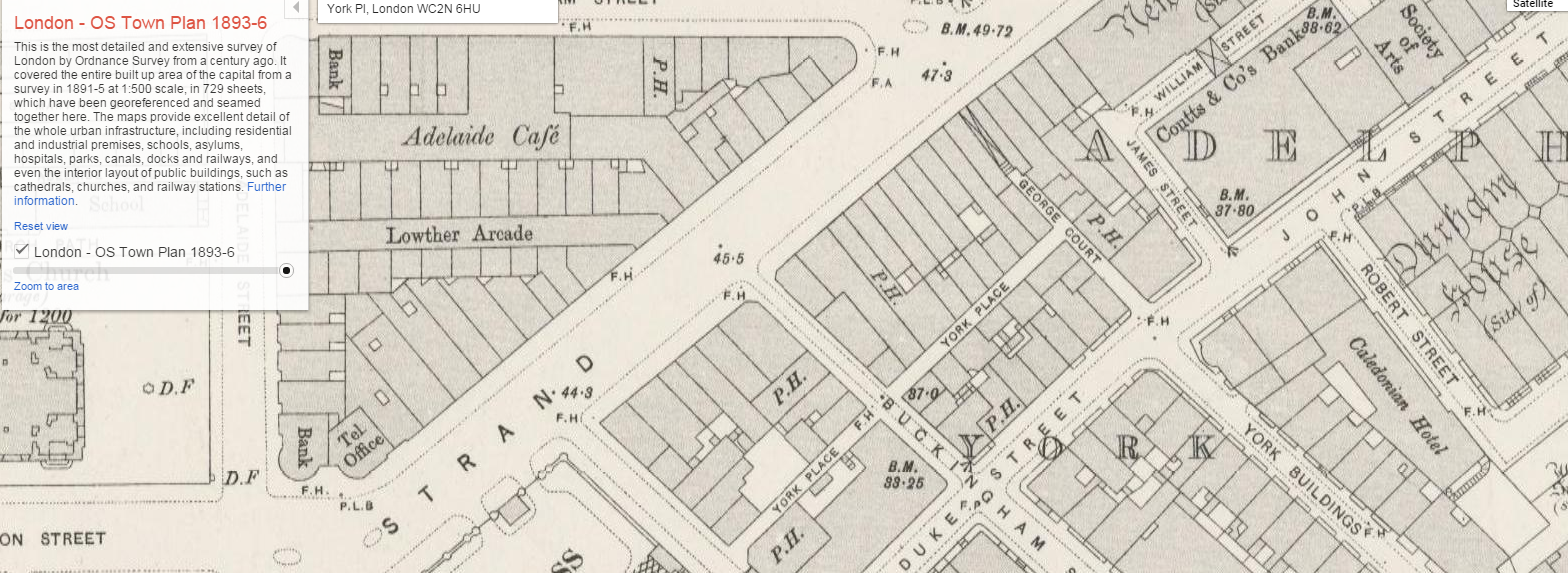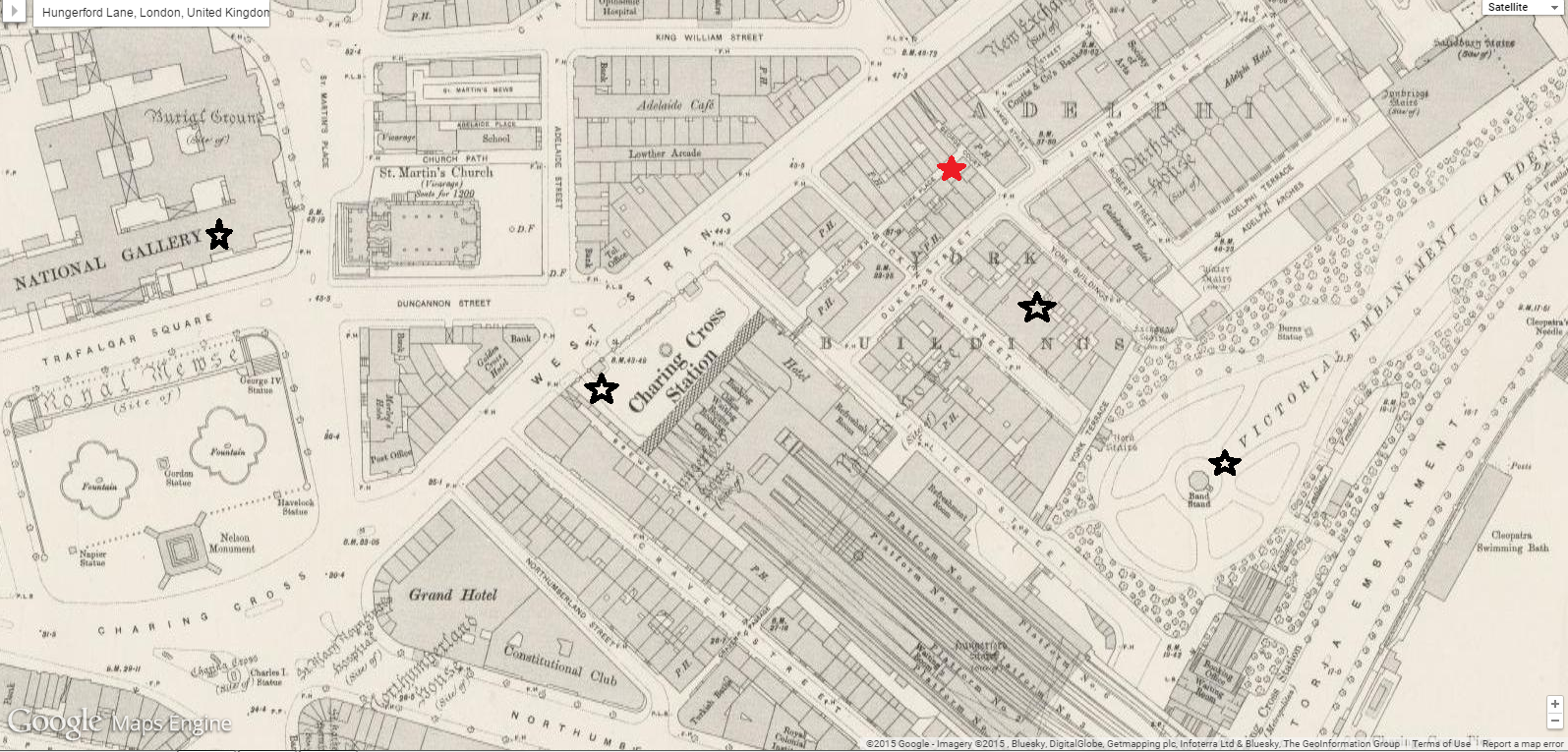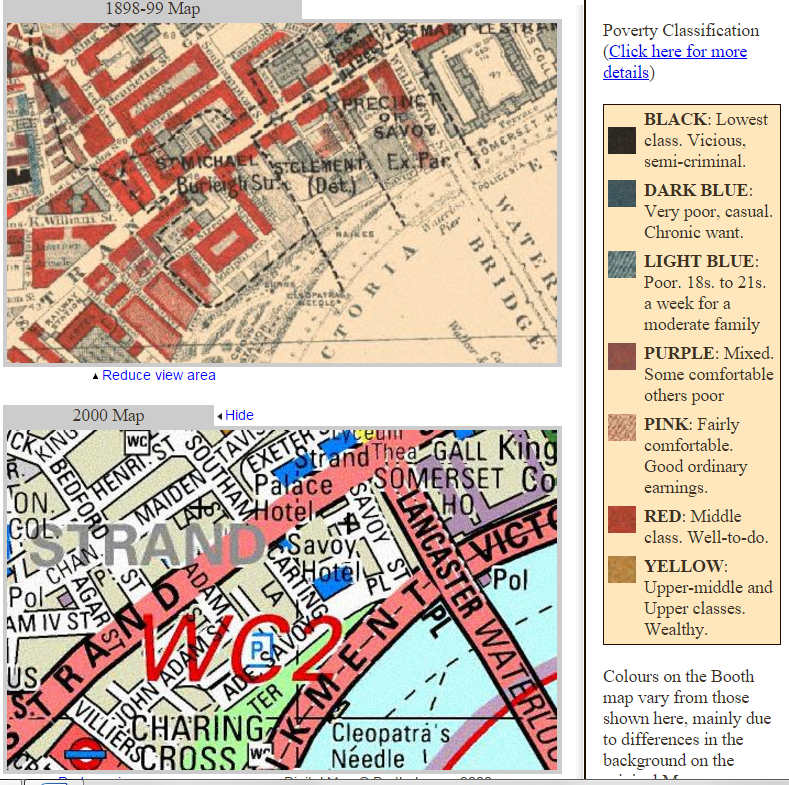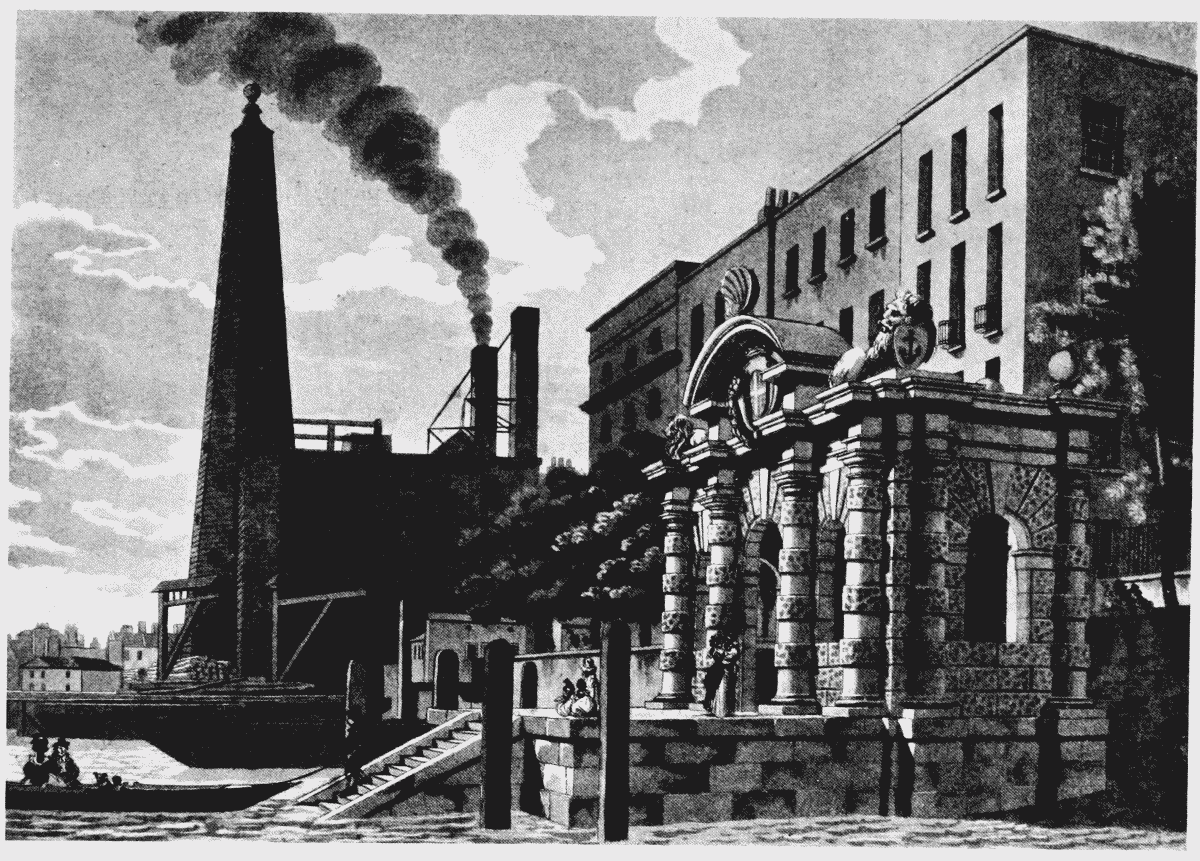
York Place, in accordance with Google maps, is the site of the “York Buildings” and is in close proximity to numerous venerated edifices. It neighbors the dynamic Charing Cross Station, scenic Victoria Embankment, the esteemed National Gallery and the most illustrious religious building in all of England, Westminster Abby. This exquisite expanse, as per Booth Online Achieves, consists of both middle-class and well-to-do residents. Further research on the topic in British History Online, in the article entitled “Hungerford Market and the site of Charing Cross Railway Station” espouses the notion that in 1670 the York Buildings Waterworks Company took possession of the York Buildings. By this time streets such as Hungerford Lane and Villiers Street; situated adjacent to York Place, were purchased by the New Hungerford Market Company and were recognized as a prominent marketplace for fish. The surrounding area was subsequently purchased by the Charing Cross Railway Company and afterward converted into Charing Cross Station(“Hungerford Market and the site of Charing Cross Railway Station”, British History Online). The Victorian Embankment, a series of eight formal botanical gardens was located behind the York Buildings. Located along the north ridge of the Thames River this reclaimed ridge was dedicated to the public, as a means of escaping the chaos and ills of the overcrowded city (“Victorian Embankment” –British Histories Online).


The York Buildings, situated behind York Place and intersecting at Duke and Buckingham Streets was strategically designed and erected with the intent of providing the burgeoning populous with a thoroughly modern infrastructure; one that supplied an abundance of water and efficiently removed toxic waste (“Victorian Embankment” –British Histories Online).

York Place is the location of the shared studio of Mr. Oakley and Frank Jermyn and doubles as the place where Frank works as an engraver (Levy, 89). Lucy and Frank journey to his studio with the intentions of photographing his “drapery” (Levy, 96-97). From “morning till night” over the next several days the women busy themselves, at the studio, by taking extensive photographs of the drapery as personally requested by Mr. Oakley (Levy, 98). This passage indicates to the reader that Mr. Oakley and Frank were enlightened. By hiring the two sisters, seemingly social rarities, the gentlemen pay homage to the women and prove themselves to be progressive thinkers. Subsequently, before sending his work to the Royal Academy Frank invites the sisters, Darrell and Lord Watergate to his studio in York Place to inspect his engravings. (Levy, 113-6). According to The Romance of A Shop, footnotes denote that the Royal Academy had been relocated to the National Gallery’s East Wing in 1868 (Levy, 133). Again, this information indicates to the reader that the sister’s abilities are treasured by men who are like-minded artists. Following Frank’s party, Lord Watergate and Darrell stay in York Place. During their time together Lord Watergate ponders whether the sisters will agree to honor him by preparing informative slides as an accompaniment to his lectures to be presented at the Royal Institution (Levy, 117). This augments the sister’s competence as scholarly women who possess both an astute sense for business and a keen awareness of art. In this way, the sisters are free to explore their freedoms by going outside of the boundaries of their shop and beyond the confines of their neighborhood. Amy Levy’s The Romance of A Shop critiques the rigid mores of Victorian London and explores the challenges embodied within this unyielding social system.
Works Cited
“Charles Booth Online Archive.” Charles Booth Online Archive. Web. 16 Dec. 2015.
Levy, Amy, and Susan David Bernstein. The Romance of a Shop. Peterborough, Ont.:Broadview, 2006. Print.
‘Plate 31: York Watergate and York Buildings Waterworks in 1795.’ Survey of London: Volume18, St Martin-in-The-Fields II: the Strand. Ed. G H Gater and E P Wheeler. London:London County Council, 1937. 31. British History Online. Web. 16 December 2015.http://www.british-history

I would like to say that this write-up very forced me to check out and read it.
http://telkomuniversity.ac.id